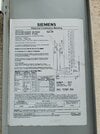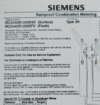jhn_
Member
This is why I think software option in the Tesla app could help the OP and I.Things like this seem to add a lot of complexity to things as you say, you have but have never needed
Tesla already has a setting when the grid is down to not charge a Tesla EV if Powerwalls reach a set % charge.
If we had a “do not charge Tesla EV from Powerwall when Powerwall below x% SOC” setting in the app for when the grid is up, we could charge without draining powerwalls. Maybe a sub option if you turned this on would be a choice to charge the EV from grid or stop charging the EV.
Anyone want to tweet my idea to @elonmusk?




